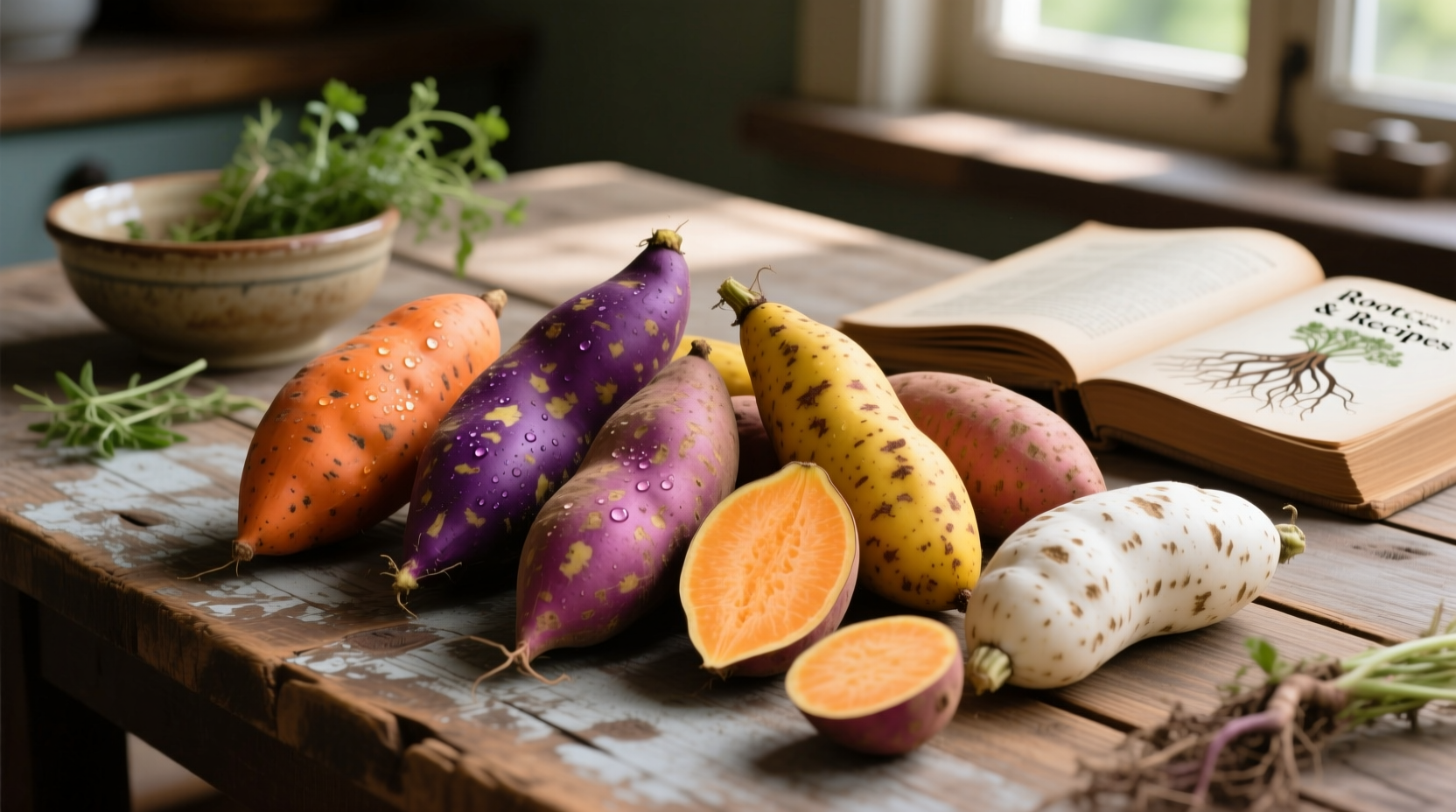Confused about whether sweet potatoes qualify as vegetables? You're not alone. This simple classification question impacts how nutritionists, chefs, and health-conscious eaters approach meal planning. Understanding the sweet potato's true category helps optimize your diet, whether you're following USDA guidelines, managing blood sugar, or simply trying to eat more produce.
Why the Sweet Potato Classification Matters for Your Plate
When you're building balanced meals, knowing exactly where sweet potatoes fit makes a practical difference. Unlike technical botanical classifications that matter only to scientists, the culinary and nutritional categories directly impact:
- Daily vegetable intake recommendations from health authorities
- Meal planning for diabetes management programs
- Grocery shopping decisions at the produce section
- Understanding nutritional labels and food databases
Let's clarify this once and for all with evidence-based information you can actually use.
Botanical Reality vs. Culinary Classification
Here's where confusion begins: botanists and nutritionists use completely different classification systems.
| Classification System | Sweet Potato Category | Key Characteristics |
|---|---|---|
| Botanical | Storage root (not a true root vegetable) | Grows from root tissue, stores nutrients for plant survival |
| Culinary/Nutritional | Starchy vegetable | Prepared and consumed like other vegetables, counts toward daily vegetable intake |
| USDA Dietary Guidelines | Vegetable subgroup: Orange vegetables | Grouped with carrots, pumpkins, and other orange-hued produce |
While botanists technically classify sweet potatoes as storage roots (modified root tissue that stores nutrients for the plant), culinary and nutritional professionals universally treat them as vegetables. The USDA's MyPlate guidelines specifically categorize sweet potatoes within the vegetable group, placing them in the "orange vegetables" subgroup alongside carrots and pumpkins.

Nutritional Profile: Why It Counts as a Vegetable
The reason sweet potatoes earn their vegetable status comes down to nutritional composition and how we consume them. According to the USDA FoodData Central, a medium sweet potato (130g) provides:
- Over 400% of your daily vitamin A needs (as beta-carotene)
- 37% of daily vitamin C requirements
- Substantial fiber content (5g per medium potato)
- Important minerals including manganese and potassium
- Negligible fat and no cholesterol
These nutritional characteristics align perfectly with vegetable profiles rather than grain or fruit categories. Unlike grains which primarily provide carbohydrates, sweet potatoes deliver complex carbs alongside significant micronutrients and fiber—exactly what defines vegetable nutrition.
Sweet Potato vs. White Potato: Understanding the Difference
Many people wonder how sweet potatoes compare to regular potatoes in classification. Both are starchy vegetables, but with important distinctions:
- Nutritional density: Sweet potatoes contain significantly more vitamin A and generally have a lower glycemic index than white potatoes
- USDA grouping: White potatoes fall under the "starchy vegetables" subgroup, while sweet potatoes are in the "orange vegetables" subgroup
- Preparation impact: How you prepare either affects their nutritional value—baking preserves more nutrients than frying
This distinction matters for dietary planning. The American Diabetes Association specifically recommends sweet potatoes over white potatoes for better blood sugar management due to their higher fiber and lower glycemic impact.
Practical Applications: Using Sweet Potatoes as Vegetables
Now that we've established sweet potatoes as vegetables, how does this translate to real-world usage? Consider these evidence-based applications:
Meal Planning According to Dietary Guidelines
The USDA recommends adults consume 2-3 cups of vegetables daily. One medium sweet potato counts as 1 cup of vegetables toward this goal. When planning meals:
- Substitute sweet potatoes for grains in dinner plates (instead of rice or pasta)
- Include them in vegetable-based breakfasts like sweet potato hash
- Use them as the vegetable component in balanced lunch bowls
Cooking Methods That Preserve Nutritional Value
Research from the Oregon State University Extension Service shows that cooking method significantly impacts nutrient retention:
- Baking: Preserves up to 92% of beta-carotene when cooked with skin on
- Boiling: Causes some nutrient leaching into water (though water can be used in soups)
- Steaming: Excellent for preserving water-soluble vitamins like vitamin C
- Avoid deep frying: Adds unhealthy fats and reduces nutritional benefits
Common Misconceptions Clarified
Several persistent myths confuse the sweet potato classification:
- "Sweet potatoes are fruits because they're sweet": Sweetness doesn't determine fruit classification—botanically, fruits develop from flower ovaries. Sweet potatoes grow underground as storage roots.
- "They're too starchy to be vegetables": Many vegetables contain starch (corn, peas, potatoes). Starchy vegetables still provide essential nutrients and fiber.
- "Yams and sweet potatoes are the same": True yams (from Africa/Asia) are different plants. What Americans call yams are actually sweet potato varieties.
When Sweet Potatoes Don't Count as Vegetables
There are specific contexts where sweet potatoes function differently than typical vegetables:
- In strict botanical contexts: Scientists studying plant biology would classify them as storage roots, not true roots or vegetables
- When heavily processed: Sweet potato fries with added sugar or sweet potato pie no longer count as simple vegetable servings
- For specific dietary protocols: Some low-carb diets may categorize them with starches rather than non-starchy vegetables
However, for 99% of everyday cooking, nutrition guidance, and dietary planning purposes, sweet potatoes absolutely function as and count toward your vegetable intake.
Conclusion: Embrace Sweet Potatoes as Your Vegetable Ally
The evidence is clear: sweet potatoes are vegetables in every practical sense that matters for your health and cooking. Their rich nutrient profile, culinary usage, and official classification by nutritional authorities all confirm their vegetable status. Whether you're following USDA dietary guidelines, managing health conditions, or simply trying to eat more produce, sweet potatoes deserve a regular spot on your plate as a valuable vegetable component.











 浙公网安备
33010002000092号
浙公网安备
33010002000092号 浙B2-20120091-4
浙B2-20120091-4